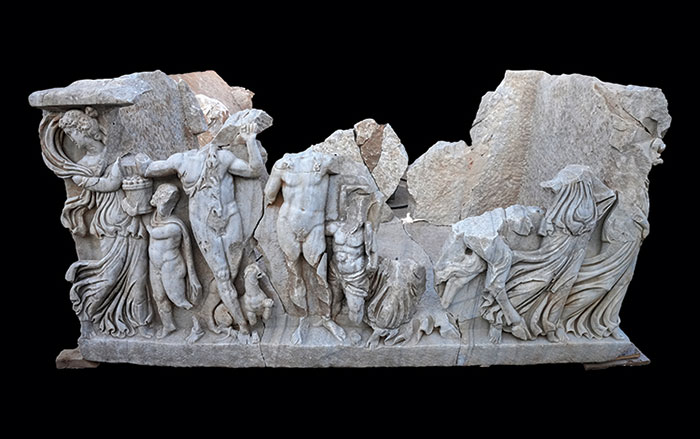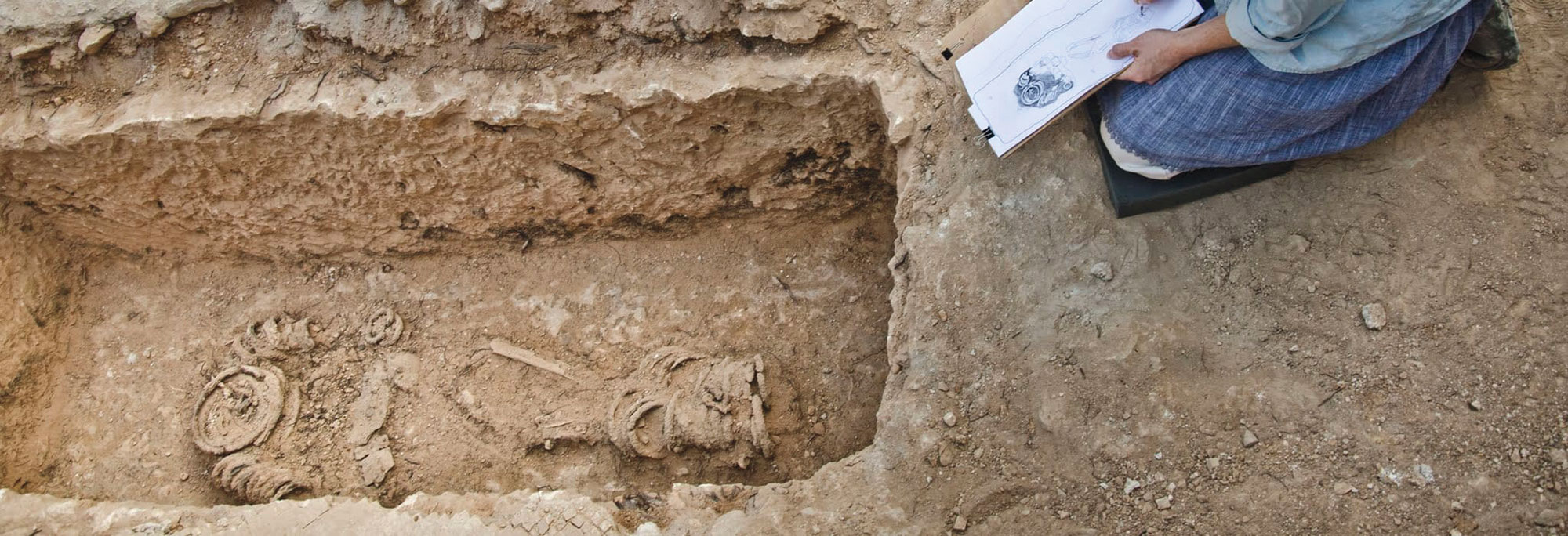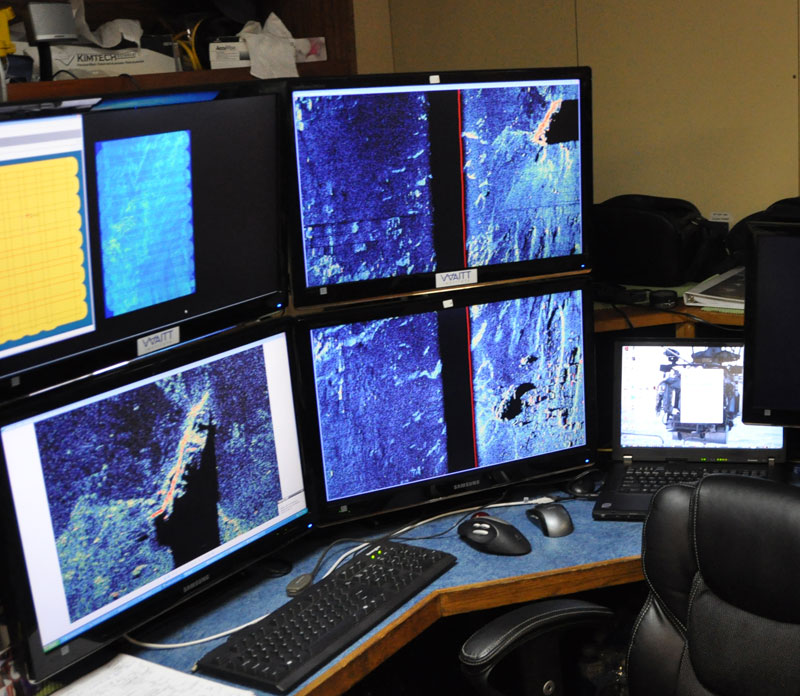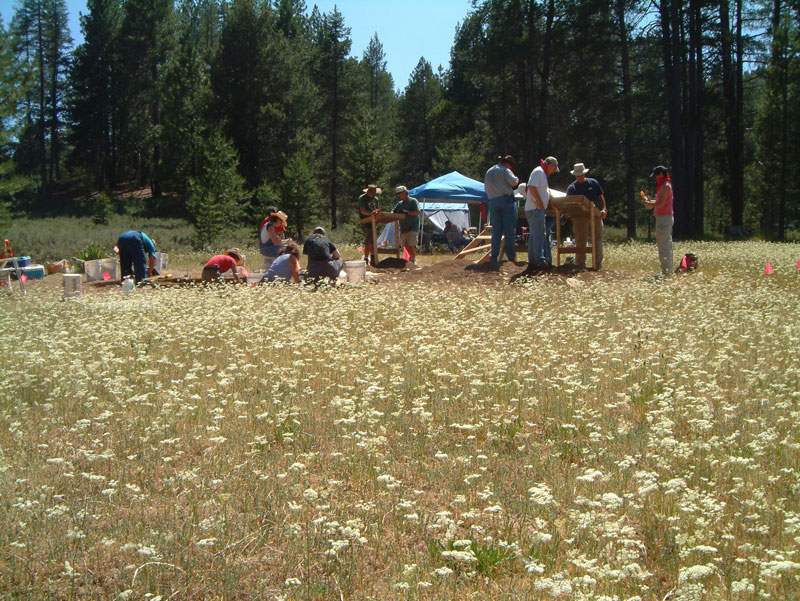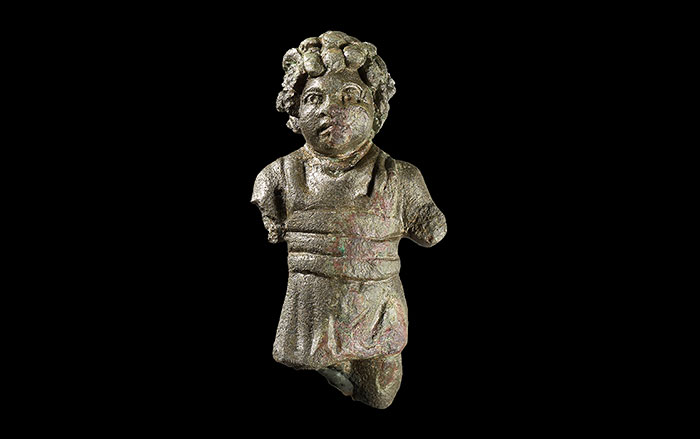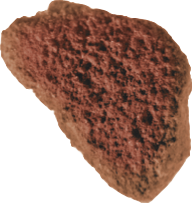In 1997, archaeologists Sharon Herbert and Andrea Berlin began an excavation project at Tel Kedesh, an enormous mound located in the rural interior of Israel's Upper Galilee region. More than a decade later, they have completed the first phase of their work and reflect on how the site brought them a story far different from the one they had gone looking for.
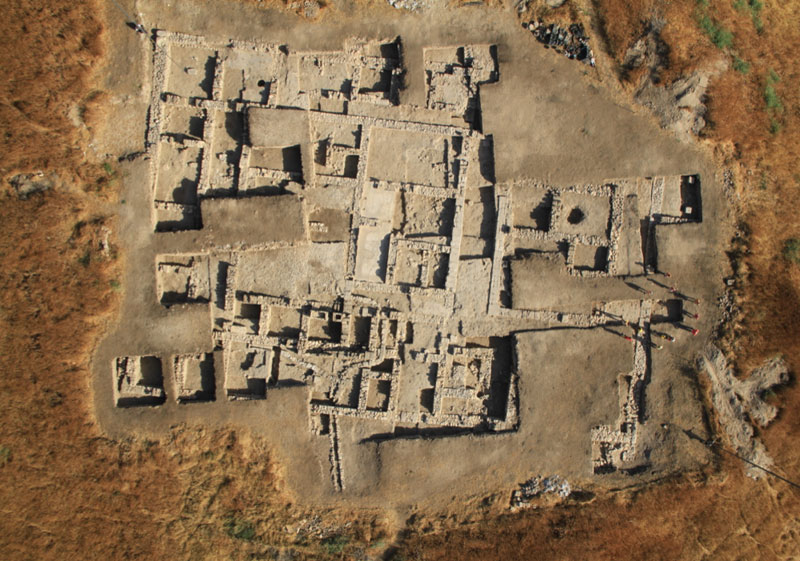

Northern Israel, a region with multiple border zones, has seen its share of modern conflict. But a picture of what life was like on this border in antiquity, especially during the period from Alexander the Great through the revolt against Rome (ca. 330 B.C.–A.D. 70), also years of political and religious unrest, remained undrawn. In the mid-1990s, as we were each finishing long-term projects in Israel, we realized that Tel Kedesh was the perfect place to investigate this question. Ancient sources repeatedly describe it as a border site—between Canaanites and Israelites in biblical times and between Phoenicians and Jews in the classical period. Today it lies along the Israeli-Lebanese border, a location that saw several dramatic battles during the 1948 Arab-Israeli War.
Tel Kedesh is enormous—more than half a mile north to south. It is a double mound, with an upper tell occupied since the Early Bronze Age (3150–2300 B.C.) and a plateau-like lower tell likely constructed in the Middle Bronze Age (2300–1550 B.C.). Since our research interests focused on a relatively short period in the site's long history, we hoped to devise a strategy that would allow us to reach those levels rapidly. In 1997, we began by surveying the entirety of the lower tell along two broad north-south and east-west transects. Next we excavated two small test trenches to discover the site's uppermost geological profile, as well as the depth and preservation of Hellenistic remains. The nature of what we found—which we expected to be largely soil or a random array of rocks—would help determine which type of remote sensing technique would be most effective.

To our surprise, less than three feet below the surface, we found ourselves in a room with more than 20 intact vessels and household objects scattered on the floor. The pots dated to the second century B.C., the heart of the Hellenistic period. There must have been a particular reason why so many complete items had been abandoned, but based on the evidence available at the time, the remains in the room could not be related to a specific historical event.

The test trenches also revealed intact limestone walls of exactly the type that would show up best in a magnetometric survey, which we carried out on the lower tell in February 1998. The resulting map showed something wholly unexpected—an approximately 20,000-square-foot outline at the tell's southeastern corner, just to the east of the room we'd uncovered the year before. A single structure of this size ought to be palatial or administrative, but no ancient historical source mentions Kedesh as a place of such importance.
In 1999, knowing that we needed to explore that huge outline and determine if it were one building or groups of smaller structures, we began our first full excavation season. Digging in the opposing southeastern and northwestern corners revealed that it was one enormous complex. The room next to the northwestern corner had a plastered floor, several wine jars from the Greek island of Rhodes, and 14 huge jars, almost five feet tall each, leaning against the walls. With permission from the Israel Antiquities Authority, we took the broken bottoms of two jars back to the United States for residue analysis and discovered phytoliths—mineral secretions left by plants after they decay—of Triticum aestivum (bread wheat). It was clear that this building had been a storeroom for wine and grain—lots of grain. Each jar held almost 25 gallons, which, once ground into flour, would produce about 150 loaves of bread.
Additional surprises came to light around the corner where we found more than 40 amphoriskoi (small, two-handled flasks) and about 1,500 tiny stamped clay lumps, or bullae. The bullae carry images including those of Greek deities, Seleucid kings, and animals and symbols. They have string holes through the sides and the neat linear impressions of papyrus on the back, both indications that they originally sealed rolled-up papyrus documents. The quantity of bullae in the room indicated that it once housed a sizeable archive. While none of the documents survive, the bullae themselves provide clues about who sent the texts and who officially approved them.
Archaeologists joke that the most important discoveries occur on the last days of an excavation season, and that's exactly what happened: We found the bullae with less than a week to go in 1999. There was no time to clean them all or finish excavating the room in which they'd been found, so these were the top priorities when we returned the next summer. By the end of the season, the total number of excavated bullae was more than 2,000. We christened this the Hellenistic Administrative Building, on the basis of the granary and the archive, both administrative features.
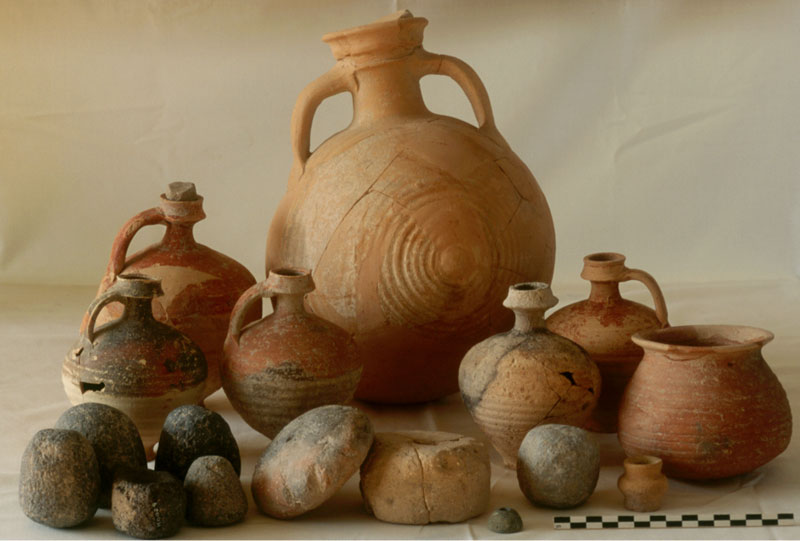
The hundreds of useful objects that were left behind in the building, including more than 20 Rhodian wine jars, continued to confirm our first impression, from 1997, that it had been abandoned very quickly.

The wine vessels have handles stamped with the names of officials, each of whose tenures can be dated with great accuracy. The latest jars date to 144 or 143 B.C. According to 1 Maccabees 11:63–73, at that time there was a battle in the valley below the Kedesh plateau between the Hasmonean leader Jonathan (the Hasmoneans were a family of high priests and kings who ruled the Jewish state of Judea between 167 and 37 B.C.) and the Seleucid king Demetrius. Jonathan's forces pursued the Seleucids to Kedesh, killed many, and camped there for several days before leaving for Jerusalem. It appears that the hastily abandoned remains found throughout the building are a result of that battle.
The Second Intifada, a period of intensified Palestinian-Israeli violence that began in September 2000 and ended in 2005, derailed excavation plans for 2001. In fact, we were unable to return to the site for five years. Beginning again in 2006, we had four productive excavation seasons that produced many incredible finds and advanced our understanding of the building. In 1999 and 2000, we had found broken column shafts from an earlier structure incorporated into the walls of the Hellenistic building. Further excavation almost 10 years later in the structure's eastern half uncovered two long foundations with circles lightly incised on the stones. These were, in effect,"setting marks" for placing the columns, allowing us to reconstruct a colonnaded entry court that belonged to that earlier building phase. Associated pottery and small finds date to the Achaemenid Persian period (ca. 540–332 B.C.). Thus we renamed the structure the Persian-Hellenistic Administrative Building and dated its initial construction to 500 B.C., when the Persian king Cyrus permitted exiled Judeans in Babylon to return to Jerusalem, as told in Ezra 1.
Several special finds reflect the character of the culture that inhabited the region at the time. These include a beautifully carved green jasper scarab with a helmeted oriental head (right); two small conical glass stamp seals, both likely worn as amulets, each with a version of the Master of Animals motif long popular in the Near East; and, finally, a clay bulla that had been stamped by a seal whose Neo-Babylonian style and design appear on many seals in a late fifth-century B.C. commercial archive discovered in the Mesopotamian city of Nippur in 1893. Our current hypothesis is that the Persian-period building belonged to well-connected officials from Tyre and that it functioned as both an agricultural depot and an impressive marker of territory. The discovery of a substantial Phoenician foothold in inland Upper Galilee provides a rare opportunity to consider native life under imperial Persian rule. It also has implications for understanding the biblical authors of this era, especially the work of the Chronicler, a writer who lived in the fifth century B.C. In his retelling of the history of the Jewish people, the Chronicler also frequently reframed relationships, especially those between the kings of Judah and the kings of Phoenicia, always to the advantage of Judah. He may have been trying to imagine away the presence of this enormous, Phoenician-administered building deep within territory that earlier biblical texts identify as Israelite.

The Persian-Hellenistic Administrative Building seems to have been briefly abandoned in the late fourth century B.C., when Alexander the Great began his march down the Phoenician coast. But after a short period of time, perhaps no more than 10 or 15 years, it was reoccupied by officials of the newly empowered empire of Ptolemaic Egypt. From this point on, from approximately 300 B.C. until the battle between Jonathan and Demetrius in 144 or 143 B.C., the building was continuously occupied and often remodeled to suit its various inhabitants. By the end of our 2010 season, about 75 percent of these Hellenistic levels had been excavated and we were able to identify what went on in the building's various sectors. A large open-air courtyard dominates the western half. To the north and west lie the granary and archive complex. South of the courtyard are utility and cooking areas. Several rooms here contain plastered bins of various shapes and sizes, perhaps for collecting and measuring agricultural products. East and north of the courtyard, three rooms form an impressive reception and dining area. Two of these have monochromatic mosaic floors, the earliest firmly dated mosaic floors yet found in Israel. The floor of the third and largest room was removed in antiquity, but we think it, too, was probably mosaic. The rooms' walls have carefully molded and brightly colored painted plaster. We also found sets of red- and black-slipped dishes that petrographic and chemical analyses indicate were imports from the area around Antioch, the Seleucid capital far to the north.
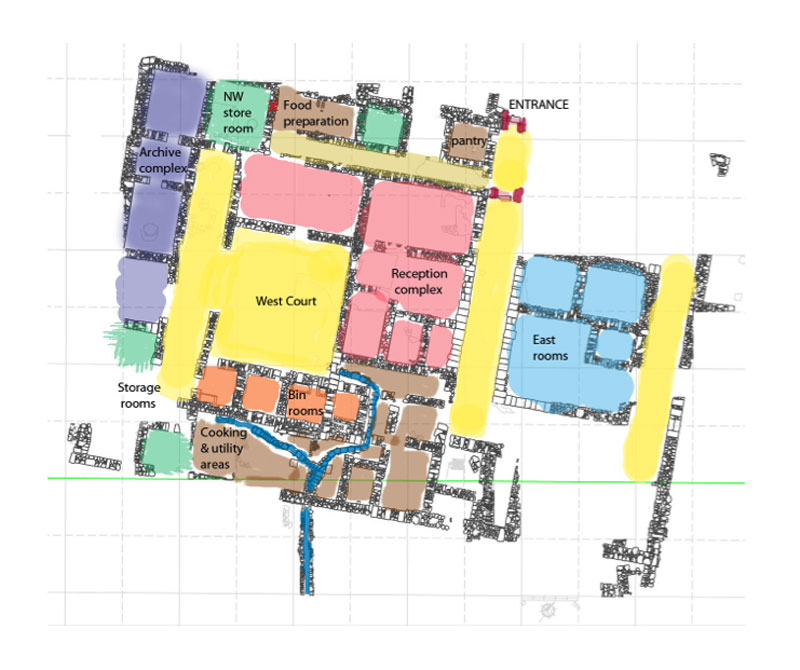
When taken all together, the archive where the bullae were found, the granary, and the collection bins all suggest the presence of imperial officials with administrative responsibilities, such as tax collecting. Taxation was an ever-present fact of life under the Hellenistic monarchies, but it's rare to find the actual location where the officials worked and collection occurred. The building's traffic patterns, which we have been able to reconstruct, show limited access between working areas and the reception rooms. In the former we found mostly plain pottery for cooking, food preparation, and storage, while in the latter we uncovered beautiful dishes and decorated lamps to adorn dining tables. Visiting officials may have carried documents to Kedesh and then enjoyed a fine meal before going on their way.
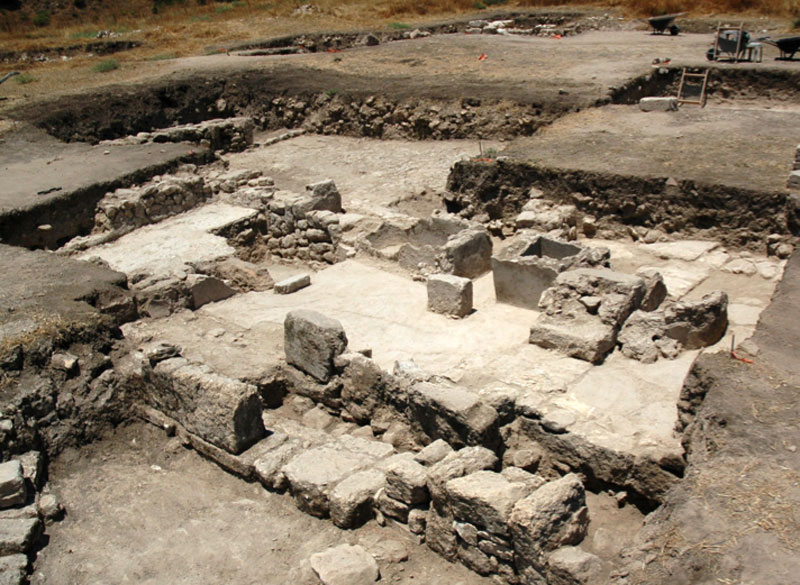
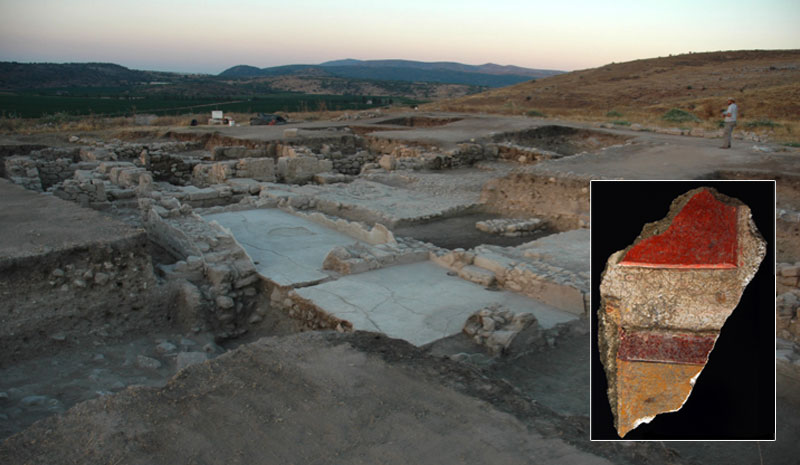
After six years of excavation, we thought we knew the site completely, and yet, the last day of our last field season still had one incredible surprise in store. While we were preparing for aerial photography, a student spotted a large, perfectly round disk in some soil that had accumulated on the eastern wall of the granary. Although the disk was covered in dirt, a bright glint along one of its edges caught his eye. Upon picking up the artifact, he knew immediately from its heft that he was holding a solid gold coin. When he brought the coin to our attention, we were able to identify it as a mnaieion (a one-mina coin, equivalent to 100 silver drachmas, or a mina of silver) of the Egyptian ruler Ptolemy V, struck in the year 191–190 B.C. at the imperial mint of Kition on Cyprus. The mnaieion is the largest gold coin ever found in Israel and only the second example of this issue found anywhere.
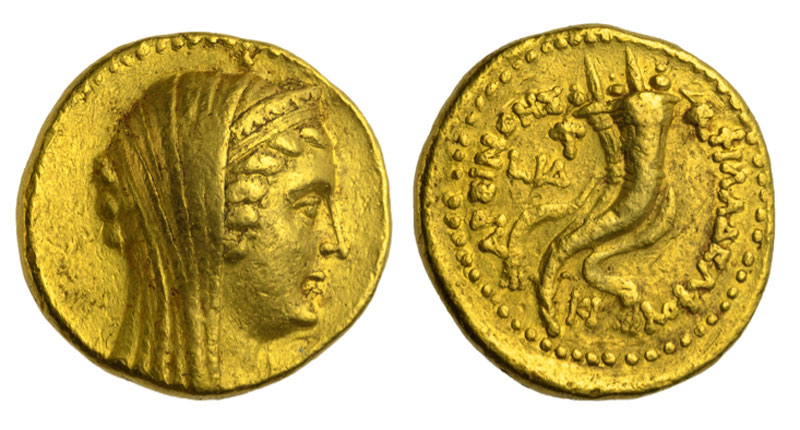
The appearance of this coin at Kedesh is a reflection of the period's power politics. By the time of its issue, the Seleucid kings controlled this portion of the southern Levant, having won it after a series of wars against the Ptolemies, the Macedonian kings of Egypt who ruled from 305 to 30 B.C. Nonetheless, for approximately the first 20 years of their rule, the Seleucids maintained the region as a Ptolemaic monetary zone, probably as a kind of diplomatic courtesy. Their actions may also have been intended to maintain market confidence, communicating that despite the change in ruling regimes, the older currency would still be honored. The gold mnaieion was certainly not a coin used as regular currency—it was simply too large in value. It might have belonged to a high-ranking Ptolemaic official, who would have traveled to Kedesh to meet with one of his Seleucid counterparts and brought the coin as a diplomatic gift. The findspot within a wall of the granary suggests that it had been stolen and hidden, likely by somebody who worked in this part of the complex.
We originally came to Tel Kedesh to investigate life on the border more than 2,000 years ago. No ancient author recorded an official presence here and it occupied an area and a time outside the pages of history. Tel Kedesh, until 1997, remained unexcavated and the surrounding region largely unexplored. Our curiosity about this border area led to the discovery of a building of enormous size and complexity, and its expensive decoration and the variety and quantity of artifacts uncovered have revealed a dominating administrative presence in the Kedesh valley and the Upper Galilee lasting nearly 350 years. Now that the excavation phase of the project is at an end and we work through the thousands of objects we discovered, we are asking questions that only archaeological evidence can answer: How did provincial elites and the workers who catered to them live? What was the relationship between this official collection complex and nearby settlements? Did status items and the cosmopolitan culture they represent trickle out, or did local officials live in a kind of elite bubble, with their own supplies of specialty goods? And perhaps most interesting, how do the social, economic, and cultural conditions reflected in the architecture and artifacts relate to periods of political calm and turmoil? As we turn from the excitement of excavation to the necessity of final report writing, we must now shift our focus from looking for artifacts to looking for answers.
Andrea Berlin is a professor of archaeology at Boston University; at the time of the Tel Kedesh field seasons she was at the University of Minnesota. Sharon Herbert is a professor of archaeology at the University of Michigan.


